
As a team of content writers, our “AI Tools” bookmark folder is a warzone. It’s overflowing with tools that promise to change the world. The truth? Most of them are just… fine. They’re fast, but the content is generic, and the features are a mile wide and an inch deep.
We kept hearing about Writesonic. It wasn’t just pitched as a “writer” but as an “all-in-one content platform.”
Honestly, we were skeptical. We’ve seen “all-in-one” before, and it usually means “master of none.” Is this a tool that will actually replace five of our other subscriptions, or is it just another cluttered dashboard?
We assigned a budget, dove in for several weeks, and tested it as a team. We ran it through our real, daily workflow. Here’s our brutally honest review of Writesonic and whether it’s worth your time and money.

Writesonic is an AI-powered platform for creating SEO-optimized content efficiently
Writesonic is, on paper, an “AI-powered content creation and marketing platform.”
For our team, what that really means is it’s a tool designed to help us generate high-quality, SEO-optimized written content more efficiently.
The main reason we decided to test it was seeing that it leverages advanced AI language models like GPT-4 and Claude. It’s built to produce a wide range of content types, including blog posts, articles, social media ad copy, product descriptions, and email marketing materials. We had to find out if the “platform” lived up to that promise.
We put the entire platform through its paces. Some features quickly became part of our workflow, while others… let’s just say they got a “pass.” Here’s what we found.
For our team of writers, the AI Article & Blog Writer is the most important feature.
The tool claims to handle everything: real-time research (using Google), integrated SEO, fact-checking with citations, matching a brand voice in 30+ languages, and even auto-generating images/FAQs.
Here’s our experience: It’s excellent for getting started when you have a blank page. It delivers a structured, logical first draft in minutes. But the “human-like” claim is an exaggeration. The output is robotic—grammatically perfect, but it has no personality or natural flow.
It’s not a tool that finishes the job in one step. It gets you most of the way there, but it absolutely requires a human to add style and, most importantly, verify the facts.

Writesonic AI Article & Blog Writer needs human editing
Writesonic’s SEO capabilities really got our team’s attention. We first explored their Traditional SEO tools: a solid Keyword Research Tool (which they claim pulls data from Ahrefs and Google Keyword Planner), a Topic Cluster generator, and a real-time SEO Checker in the editor.
The Google Search Console (GSC) integration remains a key feature, letting the AI see your site’s data. Our opinion here stands: it’s an excellent “starter” suite for a blogger who doesn’t have a separate pro tool.
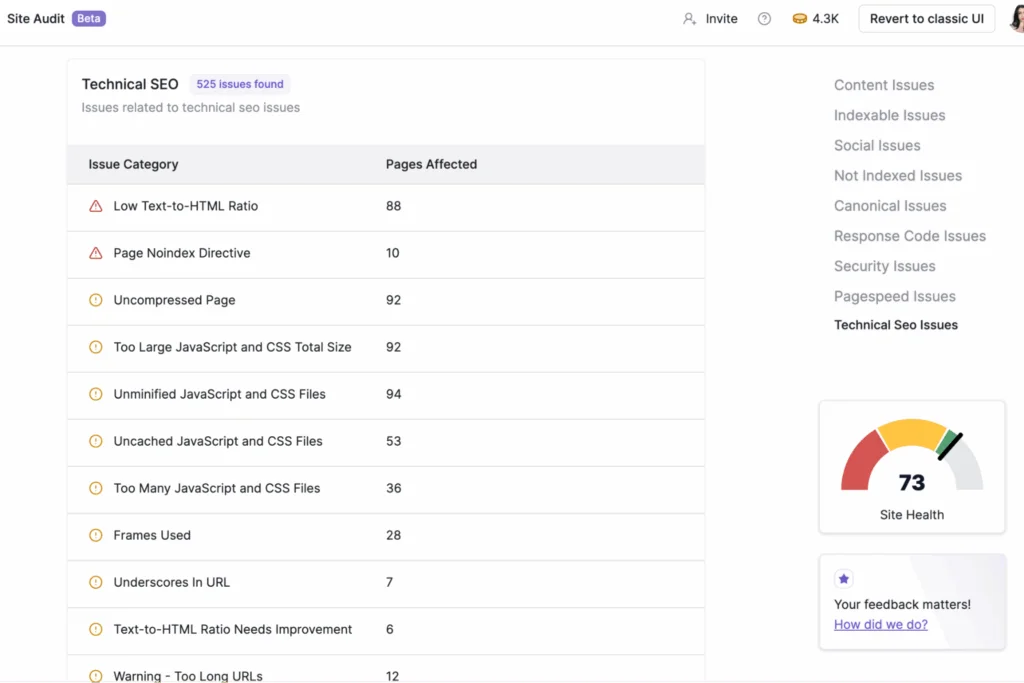
Writesonic SEO tools aid bloggers with research and optimization
But then we found the other half: AI Visibility Tracking (GEO).
This part is different. It’s not about ranking for clicks; it’s about tracking if your content is being cited by AI, like in Google’s AI Overviews or ChatGPT. The platform shows which of your pages are used as sources (Citation and Source Analysis) and even how AI talks about your brand (Sentiment Analysis).
Writesonic GEO tracks AI citations and brand mentions
Writesonic calls this a Unified Workflow (SEO + GEO). While the traditional SEO part feels like a “starter” tool, the GEO features are genuinely advanced. It’s the first platform we’ve seen that seriously tries to optimize for both old-school search and the new AI-driven answers in one place.
ChatSonic is Writesonic’s ambitious answer to ChatGPT, and it’s positioned as a powerful, real-time AI assistant.
The feature list is genuinely impressive. It’s not just a simple chatbot; it’s deeply integrated. It connects to Google Search for real-time data, it’s multimodal (it understands text, images, and audio), it can generate images right in the chat, and it even has Persona Customization. As an SEO & Content AI Agent, it can supposedly pull live data from Ahrefs and Google SERPs.
So, we put that to the test. We asked ChatSonic to do market research on a niche topic. It produced a fantastic summary—detailed, well-written, and full of data.
Then, we asked the one question our team must ask: “Where did you get this data?”
…Silence. ChatSonic does not cite its sources.
For our team, this is a massive red flag. We are responsible for every fact we publish. Using a “black box” AI is a deal-breaker for serious research. It’s great for brainstorming, but for verifiable facts? It’s a liability.
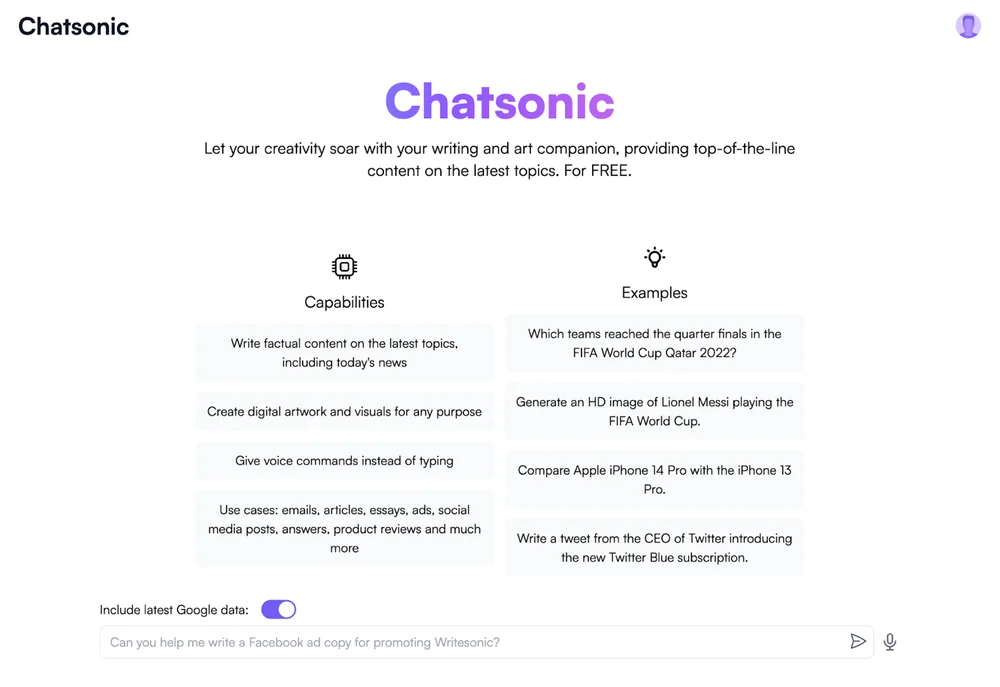
ChatSonic offers real-time AI help but lacks source citations
Writesonic boasts a massive library, claiming over 80 customizable templates. Our team explored the categories, which cover everything from Blogging (like AI Article Writer and Blog Intros) and E-commerce (Product Descriptions) to Advertising (Facebook Ads, Google Ads) and Social Media (YouTube Video Scripts).
Our team’s consensus after testing several of them? They’re fine.
They do exactly what you’d expect. They are a decent starting point if you’re completely out of ideas. But just like the main article writer, we found every single output required heavy tweaking to sound original and on-brand. They’re a solid “B” grade for brainstorming.
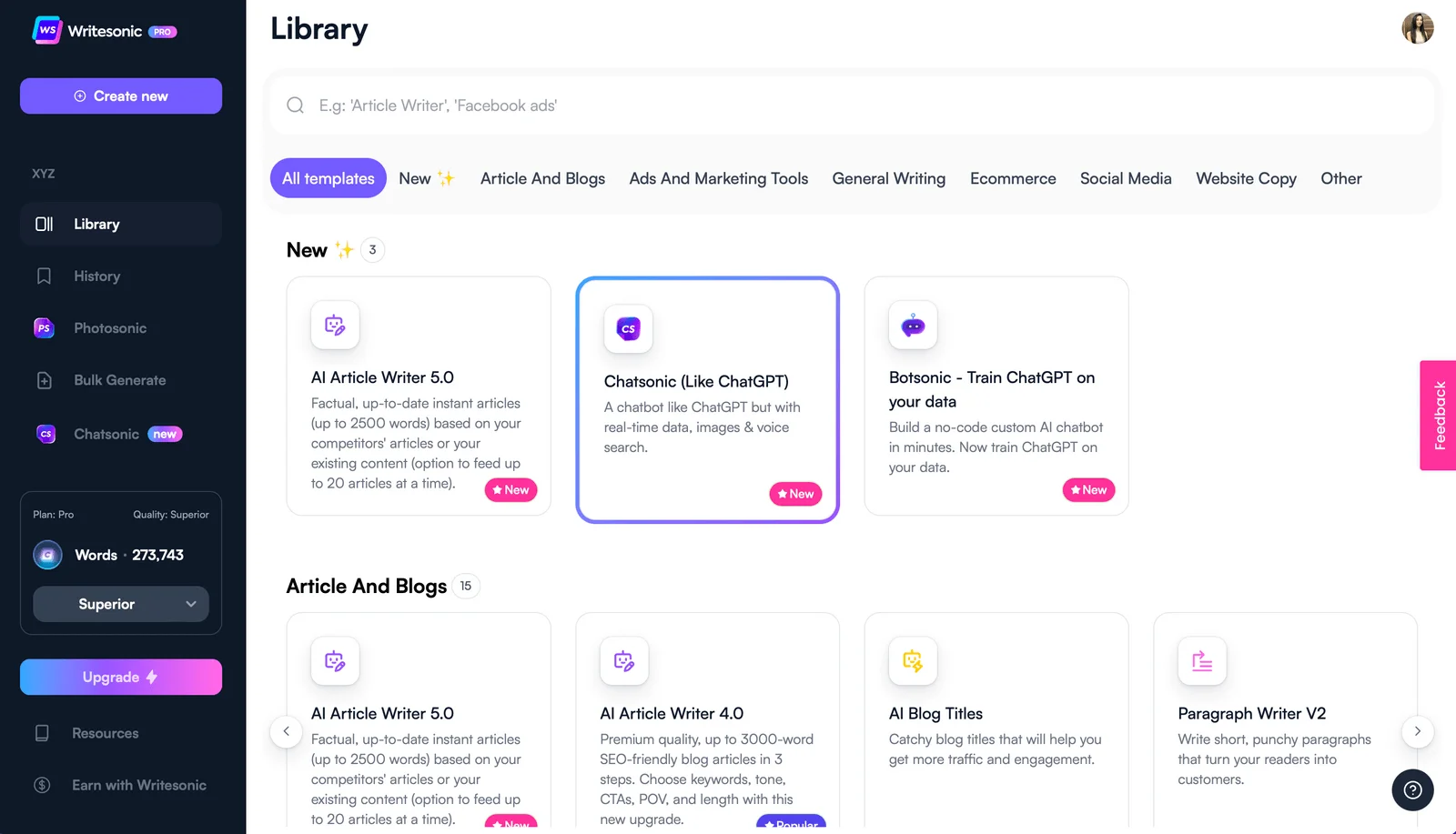
Writesonic templates help brainstorming but need heavy editing
Our team was genuinely excited for the Writesonic Chrome Extension, which promised to work inside Gmail and LinkedIn.
The ChatSonic Integration (for research) and Contextual Assistance (for summarizing/rephrasing) are truly useful.
The problem, for us, was the main content creation templates. We tested the Social Media Post feature on LinkedIn and got a dense “wall-of-text” paragraph—the opposite of engaging. The Email Generation was similarly clunky and formal, requiring a full rewrite.
So, while the extension’s assistance features are convenient, the generation tools actually slowed us down with heavy editing.

Writesonic Chrome Extension aids research but slows content work
Finally, here’s a real bright spot. Writesonic clearly understands the content creation process.. As a team that dislikes copy-pasting, we were pleased to see a built-in Zapier integration. Even more impressive is the direct integration with WordPress.
The ability to draft, edit, and publish an article to a client’s blog with just one click is a tremendous boost in productivity. This shows that the Writesonic team grasps the entire content lifecycle, from drafting to publishing. This was definitely a big advantage for us.
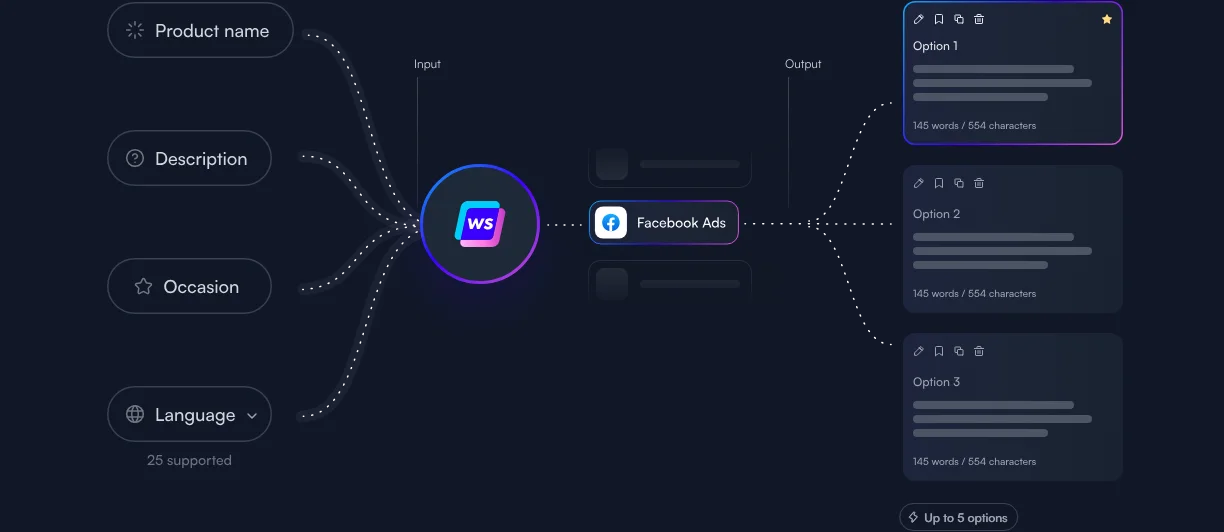
Writesonic integrates with WordPress and Zapier for seamless publishing
Our team honestly didn’t even know this existed until we were deep inside the tool. Photosonic is Writesonic’s built-in AI image generator that turns text prompts into art.
Let’s be clear: it’s not Midjourney or DALL-E 3. You won’t be creating masterpieces, even if it claims versatile styles.
But… we ended up loving it. Why? We need to create 10-15 original blog headers every week. We don’t need fine art; we need decent, royalty-free images fast.
Photosonic delivered. The fact that it’s integrated right in the editor and supports multiple formats (horizontal, vertical, and square) for different platforms is a massive, practical win that saved our team a surprising amount of time.
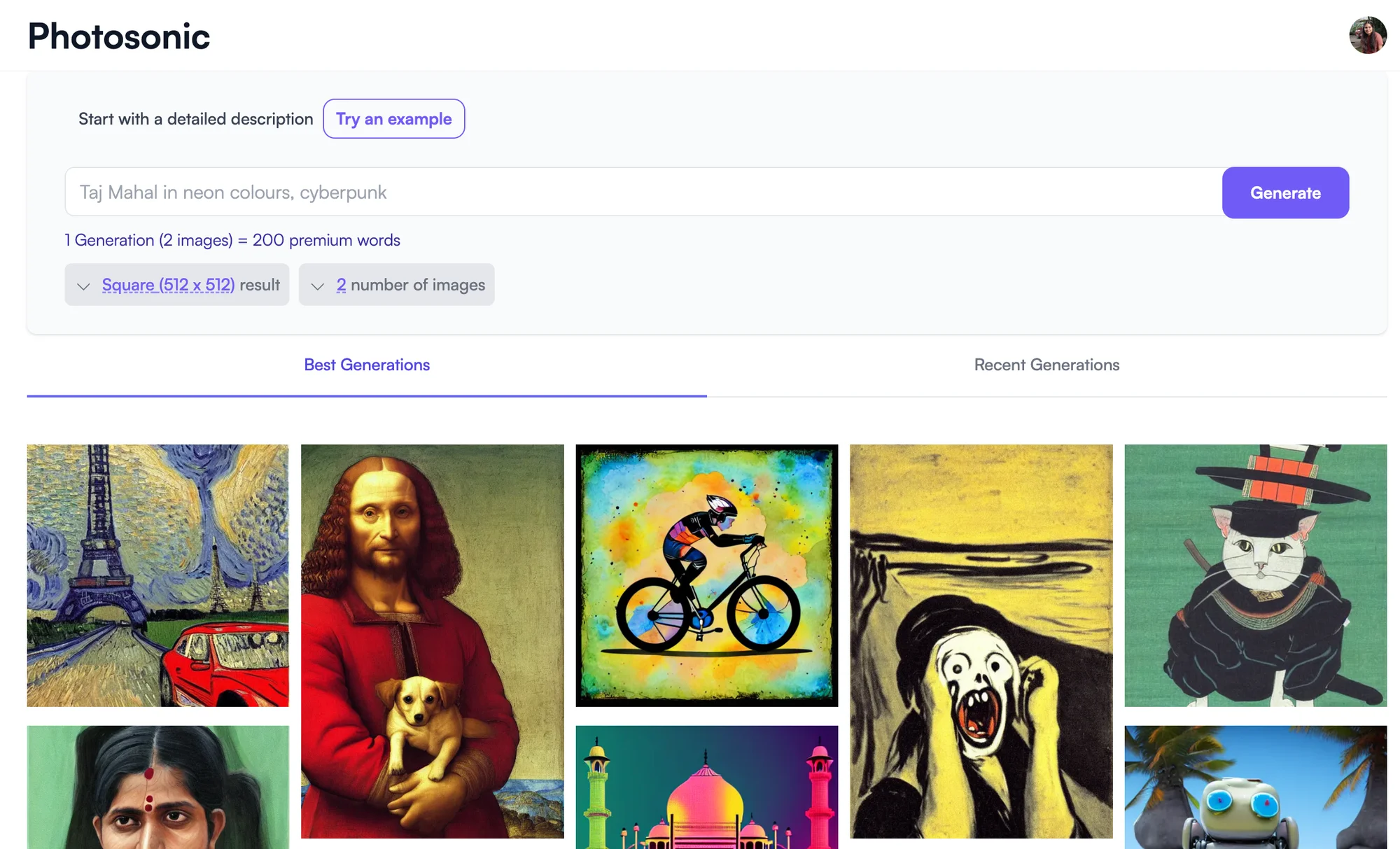
Photosonic quickly creates usable AI images for content teams
You may be interested in:
Frase vs Writesonic: Which Tool Wins for SEO Writers? [2025]
Anyword vs Writesonic: Which is the best for Writers in 2025?
After weeks of testing, here’s the simple breakdown our team agreed on.
|
Pros |
Cons |
| ✅ A true “All-in-One” platform (writer, images, SEO).
✅ Great workflow integrations (WordPress, Zapier). ✅ Photosonic is a hidden gem for fast blog images. ✅ Good “starter” SEO suite for new users (GSC, Topic Clusters). |
❌ Content drafts are robotic and need heavy editing.
❌ ChatSonic is a “black box”; it doesn’t cite sources. ❌ The Chrome Extension is clunky and slows work down. ❌ The user interface (UI) is cluttered and overwhelming. ❌ Annoying credit-based pricing system. |
Alright, let’s cut through the confusion on pricing. You can see the plan names and costs in the image, so we’ll skip those.
As we said, our team is not a fan of the confusing credit-based system. It makes you afraid to experiment.
Here’s the practical info our team dug up from their policies:
|
Key Point |
Our Key Finding |
| Free Trial | Yes, a limited one to test the tools. |
| Credit Card Required? | No. You can sign up risk-free. |
| Refund Policy | Yes, a 7-day window. |
| Refund Process | Not automatic. You must cancel and then email support. |
| Changing Plans | Yes, but changes only apply at the next billing cycle. |
| The “Catch” | The best features (GEO, GSC) are locked in the most expensive plans.. |

Writesonic Pricing Plan
Of course, our team’s experience isn’t the only one out there. We always check sites like Trustpilot to see what the broader community is saying.
With over 5,900 reviews, the feedback is… exactly what we expected. It’s a mix of people who love the platform and people who have run into serious, frustrating problems. Honestly, it perfectly matches our own “love/hate” experience.
Here’s a real snapshot of what users are saying:

A high 4.7-star rating from 5,900+ reviews
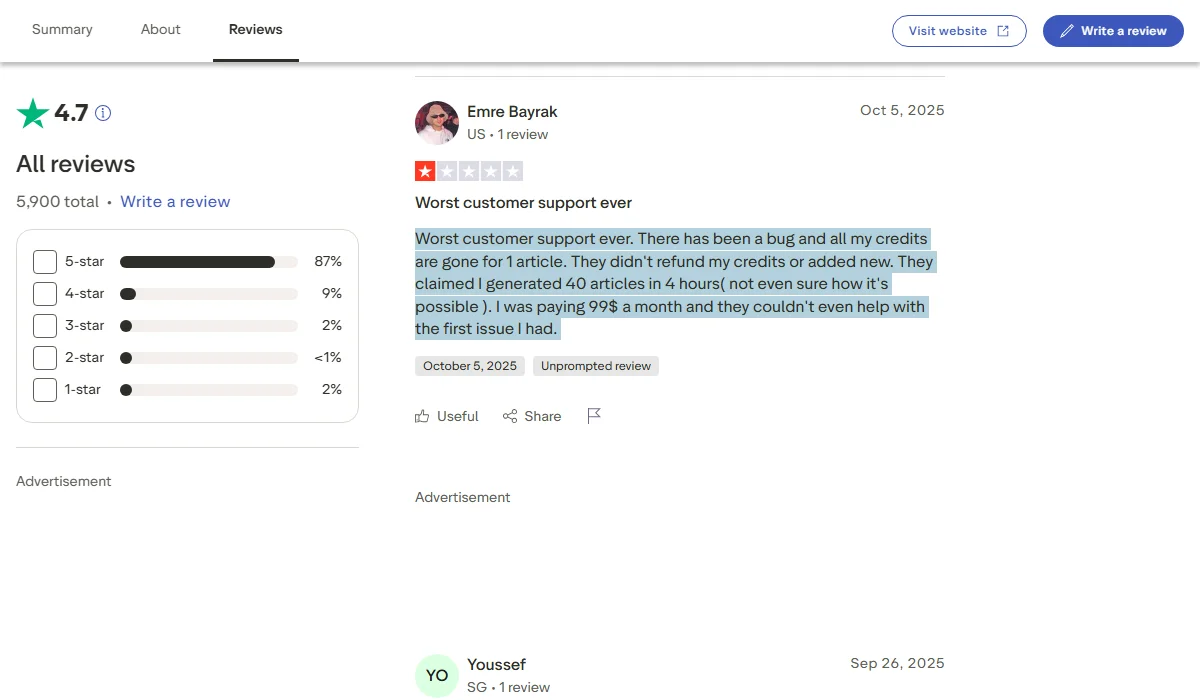
A critical 1-star review citing bugs and poor support

A balanced review: good but pricey with credit limits
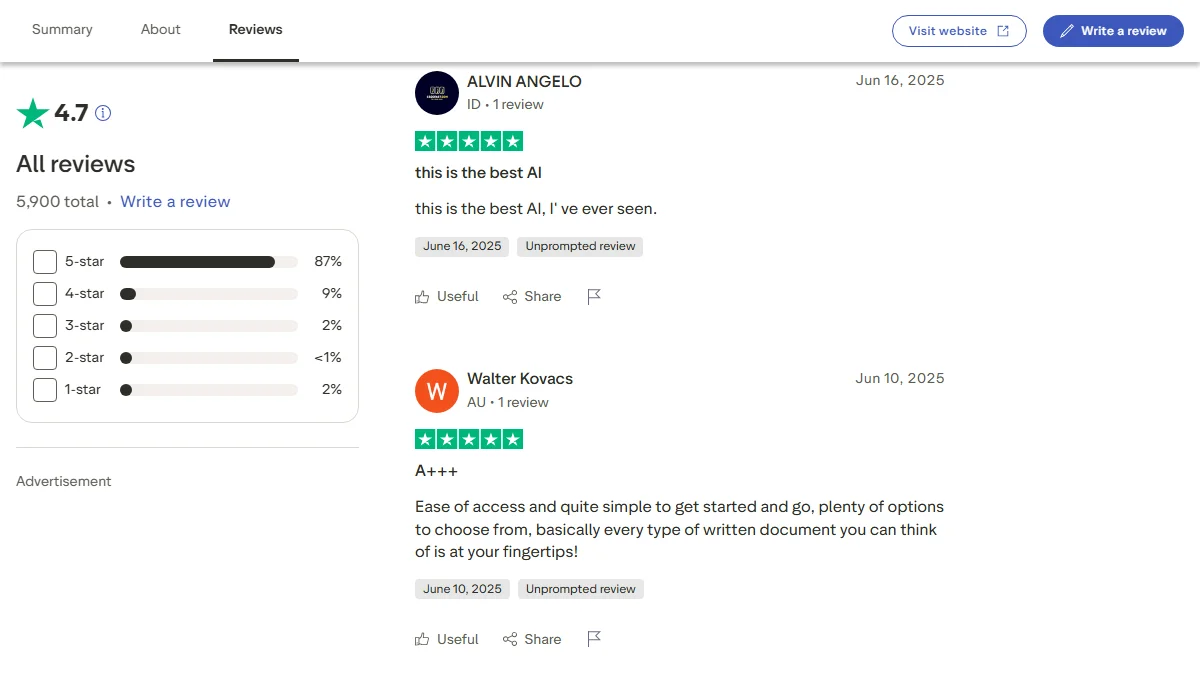
Users praise the simple, easy-to-use interface
You may be interested in:
Copy.ai vs Writesonic (2025): Which is the best AI Writing Tool?
Jasper vs WriteSonic: Which is the best AI Writing Tool in 2025?
So, after all this testing, is Writesonic worth it? Our team’s official verdict is a conditional yes.
It all depends on who you are.
You SHOULD get Writesonic if:
You should probably SKIP Writesonic if:
In the end, Writesonic is a powerful all-in-one suite but a surprisingly mediocre writing assistant. It’s a classic jack-of-all-trades, and for many people, that’s exactly what they need. For our team, we’d rather use specialized tools that are masters of one.
We’re here to help! If you’re not completely satisfied with your review, please contact us at techdictionary.io@gmail.com. Our team will be happy to take a fresh look at your product. Just a heads up: that means your rating might change. We appreciate your understanding!

